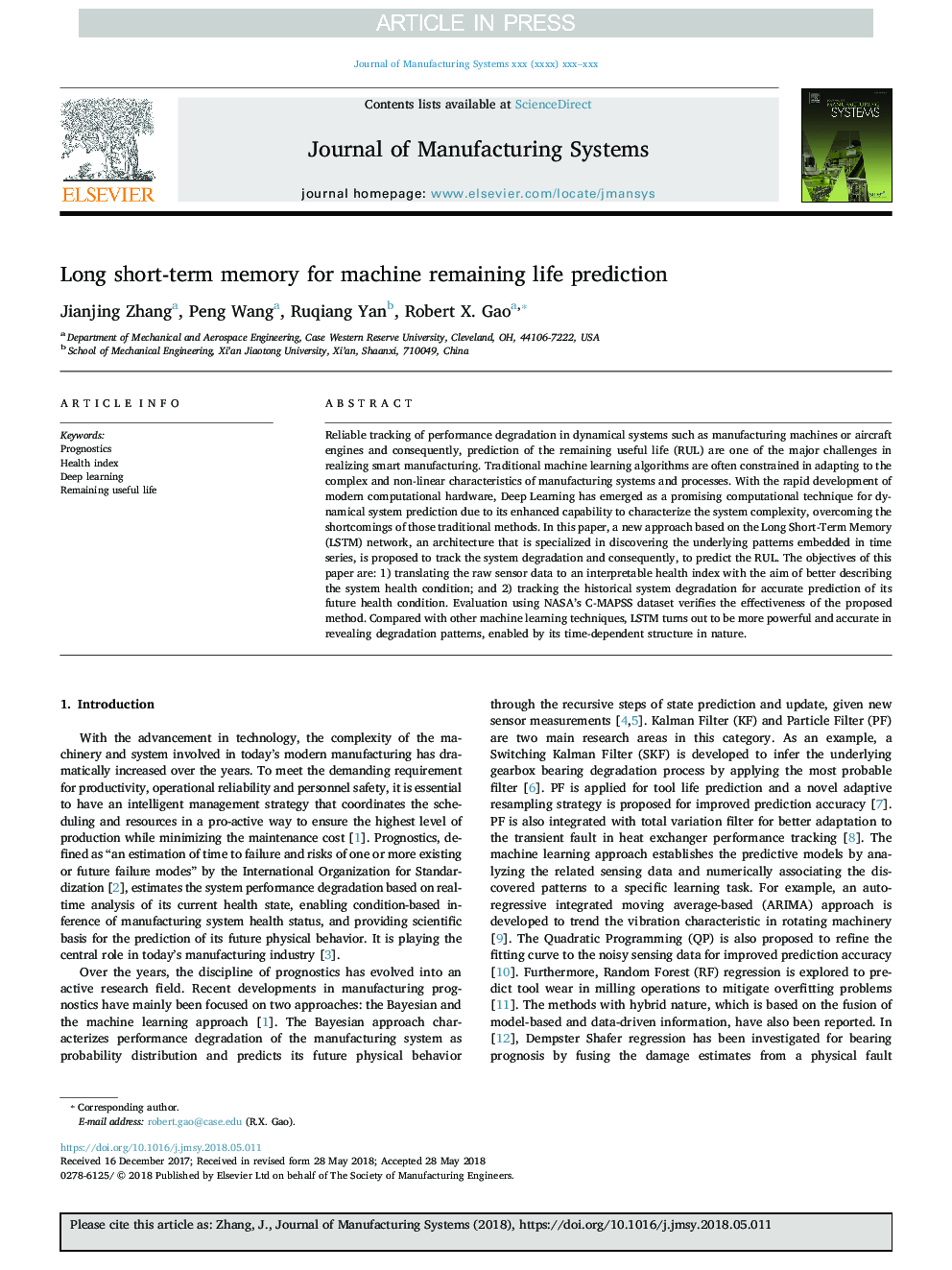| Article ID | Journal | Published Year | Pages | File Type |
|---|---|---|---|---|
| 10156158 | Journal of Manufacturing Systems | 2018 | 9 Pages |
Abstract
Reliable tracking of performance degradation in dynamical systems such as manufacturing machines or aircraft engines and consequently, prediction of the remaining useful life (RUL) are one of the major challenges in realizing smart manufacturing. Traditional machine learning algorithms are often constrained in adapting to the complex and non-linear characteristics of manufacturing systems and processes. With the rapid development of modern computational hardware, Deep Learning has emerged as a promising computational technique for dynamical system prediction due to its enhanced capability to characterize the system complexity, overcoming the shortcomings of those traditional methods. In this paper, a new approach based on the Long Short-Term Memory (LSTM) network, an architecture that is specialized in discovering the underlying patterns embedded in time series, is proposed to track the system degradation and consequently, to predict the RUL. The objectives of this paper are: 1) translating the raw sensor data to an interpretable health index with the aim of better describing the system health condition; and 2) tracking the historical system degradation for accurate prediction of its future health condition. Evaluation using NASA's C-MAPSS dataset verifies the effectiveness of the proposed method. Compared with other machine learning techniques, LSTM turns out to be more powerful and accurate in revealing degradation patterns, enabled by its time-dependent structure in nature.
Related Topics
Physical Sciences and Engineering
Engineering
Control and Systems Engineering
Authors
Jianjing Zhang, Peng Wang, Ruqiang Yan, Robert X. Gao,
